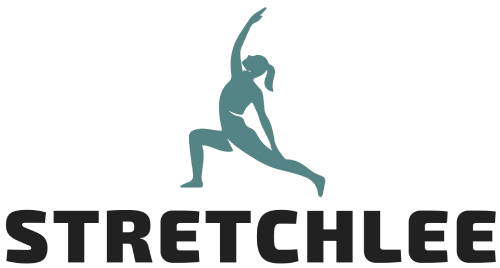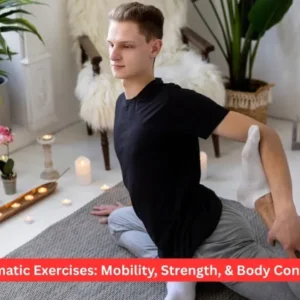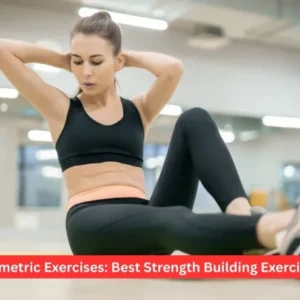Sculpted, trim legs are not just an athlete’s privilege- anyone can have them, and you don’t require a gym or having to purchase anything. Exercise Resistance Band Legs Workout will help develop muscle, tone, burn fat, and help improve balance in their living room or at the park.
Resistance bands offer progressive resistance, i.e., the further you stretch the band, the harder your muscles will need to work. This not only strengthens but also engages stabilizing muscles that are often neglected by weights. They are beginner-friendly, versatile for advanced users, and they even have the capability of tightening skin as one progresses with it due to the rise in muscle tone.
This guide will discuss a Resistance Band Legs Workout step-by-step program, Resistance Band Legs exercising mistakes to prevent, a weekly schedule, and tips needed to make your lower body change.

- Step 1: How to Warm Up Effectively for Resistance Band Leg Training?
- Step 2: What Are the Best Resistance Band Squat Variations?
- Step 3: How to Target Glutes and Hamstrings with Bands?
- Step 4: How to Work Inner and Outer Thighs with Bands?
- Step 5: How to Cool Down and Stretch After a Band Workout?
- Step 6: How to Progress and Increase Intensity Over Time?
- Step 7: How to Combine Resistance Band Workouts With Cardio for Faster Results?
- What Common Mistakes Should You Avoid in Resistance Band Leg Workouts?
- How to Fit This Into a Weekly Daily Routine?
- Additional Benefits and Considerations
- Conclusion
- Frequently Asked Questions
Step 1: How to Warm Up Effectively for Resistance Band Leg Training?
As a preliminary to working, one should use a warm-up that will prevent injuries and help achieve results two or three times more. A good warm-up boosts the blood, brings your muscles to life, and makes them more supple. Failure to do it may result in poor progress and increased risks of an injury.
- Warm-up (5 min)
- Bodyweight Squats-15 reps
- Leg Swings (10 reps leg to leg (front to back and side to side))
- Presenteeism March on the Ground 1 min
- Hip Circles 10 in each direction
HINT: It is possible to start with a light band around your thighs to promote extra activation. Even a quick walk with a band above the knees has the potential to begin to bring your glutes into the game and could bring some toning to your legs in the long run.
Step 2: What Are the Best Resistance Band Squat Variations?
Squats are some of the most effective exercises in the development of stronger and more defined legs. Bands also provide an additional resistance that targets your glutes, quads, and hamstrings better. This not only tones but, with the supplementary use of proper nutrition and cardio, it can decrease the size of thighs too.
Popular types of Squat:
- Banded Bodyweight Squat- Band on knees; stay in tension.
- Sumo Squat band Pull-Apart– Wide Stance to activate the inner thigh.
- Squat Pulse -This one needs to be low, pulse 15-20 reps to burn muscle.
| Squat Type | Main Muscles Worked | Band Position |
| Banded Bodyweight Squat | Quads, glutes | Above knees |
| Sumo Squat | Inner thighs, glutes | Above knees |
| Squat Pulse | Quads, glutes | Above knees |
Resistance band squats can equal, and even increase in muscle activity compared to weights; therefore, performing the exercise can be a great alternative to some of the gym machines.

Step 3: How to Target Glutes and Hamstrings with Bands?
Resistance bands will aid in bulking your glutes, developing strong hamstrings, and growing more powerful legs. Adequate glute activation also helps to get rid of hip fat and enhances the overall appearance, since this will lead to lower-body aesthetics.
Top Exercises:
- Banded Glute Bridge: Raising a band makes a significant difference in this exercise, as they do in most exercises.
- Banded Deadlift- Strength developer of the hamstrings and the lower back.
- Kickbacks kick the glutes; one of the best to firm/lift.
And because of their rapid increase in glutes, hip thrust using a band is a much better option when you desire quicker glute gains, and 2-3 weeks of adding it to your routine can yield noticeable results in 8-12 weeks.
Step 4: How to Work Inner and Outer Thighs with Bands?
Bands are especially effective in isolating inner thighs and outer thighs, which are otherwise more difficult to engage in weightlifting. The toning of such muscles helps to thin the thighs, increases stability, and even decreases the visibility of cellulite in case a proper diet is followed.
Recommended Moves:
- Side Steps – Tones the outer hips and the thighs.
- Clamshells- This is great as far as hip stability is concerned.
- Standing Abductions – This is great to tone the outside thighs and the hips.
With regular exercise, these are some of the exercises that would help to attain the definition of slim thighs without adding bulky muscle weight, particularly in combination with calorie restrictions.
Step 5: How to Cool Down and Stretch After a Band Workout?
Cooling down contributes to the bodily restoration of your muscles, deters the stiffness, and aids flexibility. You cannot do without it to achieve long-term development.
Post-Workout Stretches:
- Standing Quad Stretch: 2030sec per leg.
- Seated Hamstring Stretch -Flexibility, recovery.
- Figure-Four Stretch First-Aid – Loosens up tense hips.
- Calf Stretch Against Wall -Loosens stiff calves.
Not only does resistance band training make you more muscular, but it can also slim and tighten the skin on your legs as your muscles fill the space.

Step 6: How to Progress and Increase Intensity Over Time?
In case you want to get constant results, you should train your muscles gradually. This is referred to as progressive overload, which works as well with weights as it does with resistance bands.
Options to Make Intensity More:
- Heavy resistance band.
- Reduce the speed of repetitions to get a longer time under tension.
- Put pulses at the finish of each rep.
- Do additional sets or repetitions.
- Lessen the set recovery period.
Hint: Keep a record of training sessions and record when a band is too easy. That is your indication to go to a higher one.
Step 7: How to Combine Resistance Band Workouts With Cardio for Faster Results?
Resistance training increases muscle tone; however, combining it with cardio builds fat loss faster and enhances endurance.
Combination Ideas:
- Circuit Training: Start with a Resistance Band leg workout, as well as 1 to 2 minutes of jump rope or high knee, followed by rest.
- Walking with Bands: Put a light band above your knees and walk with purpose at a fast pace for 1015 minutes to lift glutes and thighs.
- HIIT with Bands: Take a combination of squats, lunges, and lateral walks with short sprint sessions or mountain climbers.
Hint: To get the best results, train with bands 3-4 times a week with strength-based workouts and alternate with cardio exercises.
What Common Mistakes Should You Avoid in Resistance Band Leg Workouts?
Although resistance bands are newcomer-friendly, they can be abused, resulting in poor outcomes or injury.
Frequent Mistakes:
- Relaxing the band.
- Training with too heavy bands early on.
- Not taking reps under control as opposed to rushing reps.
- Failing to use your core results in back strain.
- Including a failure to warm up and cool down.
Select a resistance that does not disrupt your form and put you at a disadvantage, and keep this in mind: consistency over intensity is the way to go in the beginning.

How to Fit This Into a Weekly Daily Routine?
The legs require rest to become more powerful and slim. Fatigue may also occur with more gainful results, triggering the leanness of overtraining.
Sample Weekly Plan:
| Day | Workout Focus | Duration |
| Monday | Resistance band legs workout (full) | 30–40 min |
| Tuesday | Upper body training or light cardio | 25–30 min |
| Wednesday | Resistance band legs workout (lighter) | 20–25 min |
| Thursday | Rest or yoga/stretching | 20 min |
| Friday | Resistance band legs workout (full) | 30–40 min |
| Saturday | Cardio (cycling, jogging) | 30 min |
| Sunday | Rest or mobility work | 20 min |
To use bands daily, one would need to rotate muscle groups and change strength levels, but in the case of legs, 2-3 times per week with a focus on the given muscles should be sufficient.
Additional Benefits and Considerations
- Body-wide potential: Bands will perform most of the exercises in a gym, even for beginners and intermediate users.
- Weight vs. bands: With bands, the amount of muscle activation can be equivalent to weights, but the absolute resistance available is unlikely to be equivalent to that available with weights taken to near-maximal strength purposes.
- Beginner resistance level: The vast majority are beginning with bands comparable to 5 to 15 kg of resistance.
- Fat loss: Band workouts combined with a calorie deficit will help melt down belly fat, hips, and thighs.
- Older adults: Resistance bands are non-jarring on joints, so they are great to use to tone up those old lady legs safely.

Conclusion
The Resistance Band Legs Workout is probably the most inexpensive and all-purpose method to work on the legs in a beginner-friendly manner. It enables you to gain muscle mass, shape up your thighs, develop glutes, and strengthen your legs, and yet you do not need to visit the gym. With an organised plan, without making most of the common mistakes, and by being consistent, you will see the result that will become noticeable and lasting.
Frequently Asked Questions
Q. Do resistance bands work to build leg muscle?
Yes- bands can make huge muscle and strength gains when you apply sufficient resistance and progressive overloads to them.
Q. What is the frequency of resistance band leg workouts?
Once or twice a week, in the majority, with intervals of rest.
Q. Is it possible to use resistance bands instead of my gym?
In many cases of fitness objectives, yes, bands can be an encapsulating alternative provided they are used imaginatively.
Q. Do band exercises make thighs slim?
With the right diet, they can tone muscles and eliminate fat.
Q. What is the time frame?
With regular training, in 4-6 weeks, many notice a difference in strength and tone.







